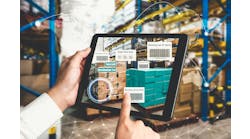In baseball, you can't hit it if you can't see it. In logistics, you can't manage it if you can't see it.
Accurately managing the complexities of today's logistics and supply chain systems requires one thing above all else—visibility, in real time, to each component and variable of the system. Whether you're a manufacturer or involved in any aspect of distribution, visibility is the key factor enabling accurate, timely decision making.
Top-ten global steel company Tata Steel found a lack of timely visibility was hindering its management of outbound shipments and driving up the costs of its shipping and billing processes. Switching to a cloud-based transportation management system (TMS) provided the visibility into Tata's supply chain that enabled the company to increase efficiency, meet on-time delivery goals and make better decisions based on real-time data.
For Tata, visibility was not an end in itself, but a means to an end. In this case, real-time visibility to its logistics operation delivered precise calculations of total shipping costs, enabling Tata to reduce the manual work required for effective end-to-end management. And it enabled better freight-management efficiency, increasing on-time delivery performance.
Crediting its TMS, a Tata executive said, "The collected data is the result of all real-time updates made during the transport route, giving us better insights into the performance of our various logistics service providers."
All supply chain participants benefit from better visibility. Leading retailers, distributors, shippers and manufacturers all spot the "visibility" trend as a key to more accurate supply chain and logistics management, in applications ranging from shop floor Internet of Things applications that monitor materials and finished goods within a plant or warehouse, to omni-channel retailers with complex ordering and fulfillment requirements.
In the case of apparel giant Levi Strauss & Co., an effort to create a seamless closed-loop solution for communicating with parcel services was driven by a need for improved visibility. Levi's TMS solution provided the real-time visibility that enabled the company to address a range of shipping, communication, performance-reporting and reverse logistics issues.
In a key outcome enabled by enhanced visibility, Levi's was able to use its cloud-based TMS to generate accurate end-to-end performance reports, reducing labor requirements and improving carrier negotiations and performance. Levi's also used its system to generate real-time notifications of shipping status, enabling the issuance of proactive customer alerts.
By integrating Levi's with all its carriers to ensure real-time communication, the company's TMS automatically builds a central repository for region-wide reports based on the information it tracks.
Tata Steel and Levi Strauss are representative of the kinds of companies benefitting from increased visibility into their logistics and supply chain operations. They are by no means alone in understanding the critical importance of this issue. In fact, a recent industry study on real-time visibility found 97% of supply chain executives citing visibility as crucial to their businesses. Unfortunately, many of the surveyed companies are limiting their logistics visibility by relying on manual processes for information exchange among supply chain participants. The failure to employ current generation TMS automation yields a "visibility gap" between companies' needs and today's reality.
Customer expectations also drive the need for visibility into the logistics operation. Real-time visibility is not an option in a business environment where customers expect a seamless shopping experience, regardless of the channels they use for buying and taking delivery of their purchases.
A cloud-based TMS can deliver the end-to-end visibility that producers, shippers and sellers need in a competitive marketplace. Benefits of a single-platform solution include real-time status updates (shared by all affected parties), accurate forecasting and reporting, efficiencies gained through automation, and reduced net landed cost of goods—by as much as 30%.
Lisa Henthorn is vice president of Eyefreight (www.eyefreight.com), a provider of transportation management systems.



